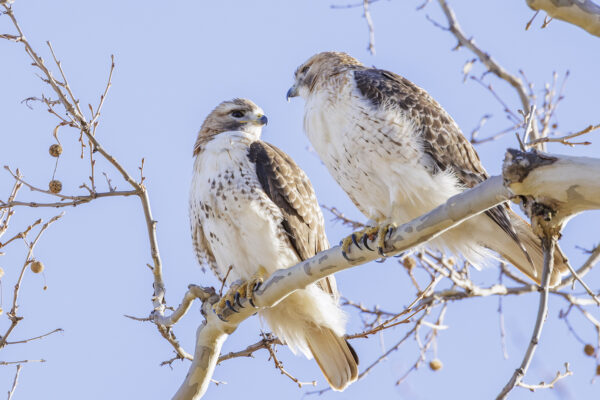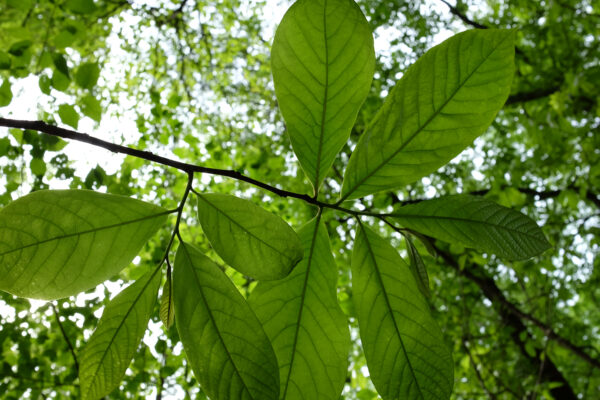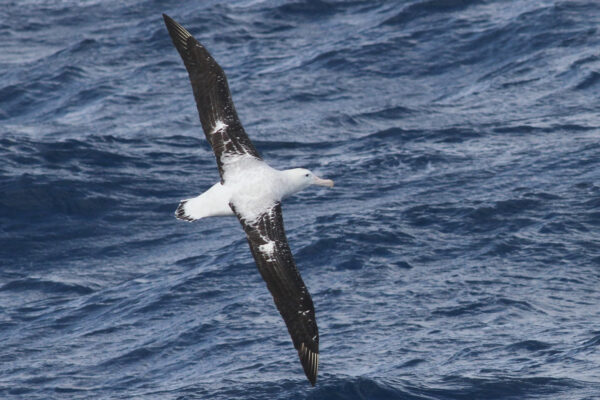St. Louis sits on the Mississippi Flyway — the largest migratory pathway used by birds in North America.
Most birds migrate at night. At sunrise, some of the weary travelers dip down into the trees along the edge of the Meramec River at Tyson Research Center, Washington University in St. Louis’ environmental field station, to fuel up by catching insects.
When they arrive, Samantha Matchefts, BA ’87, and her team are there to greet them. For one month each year, typically mid-April through mid-May, Matchefts leads a group of volunteers who capture, band, record and release migratory birds traveling north through St. Louis.
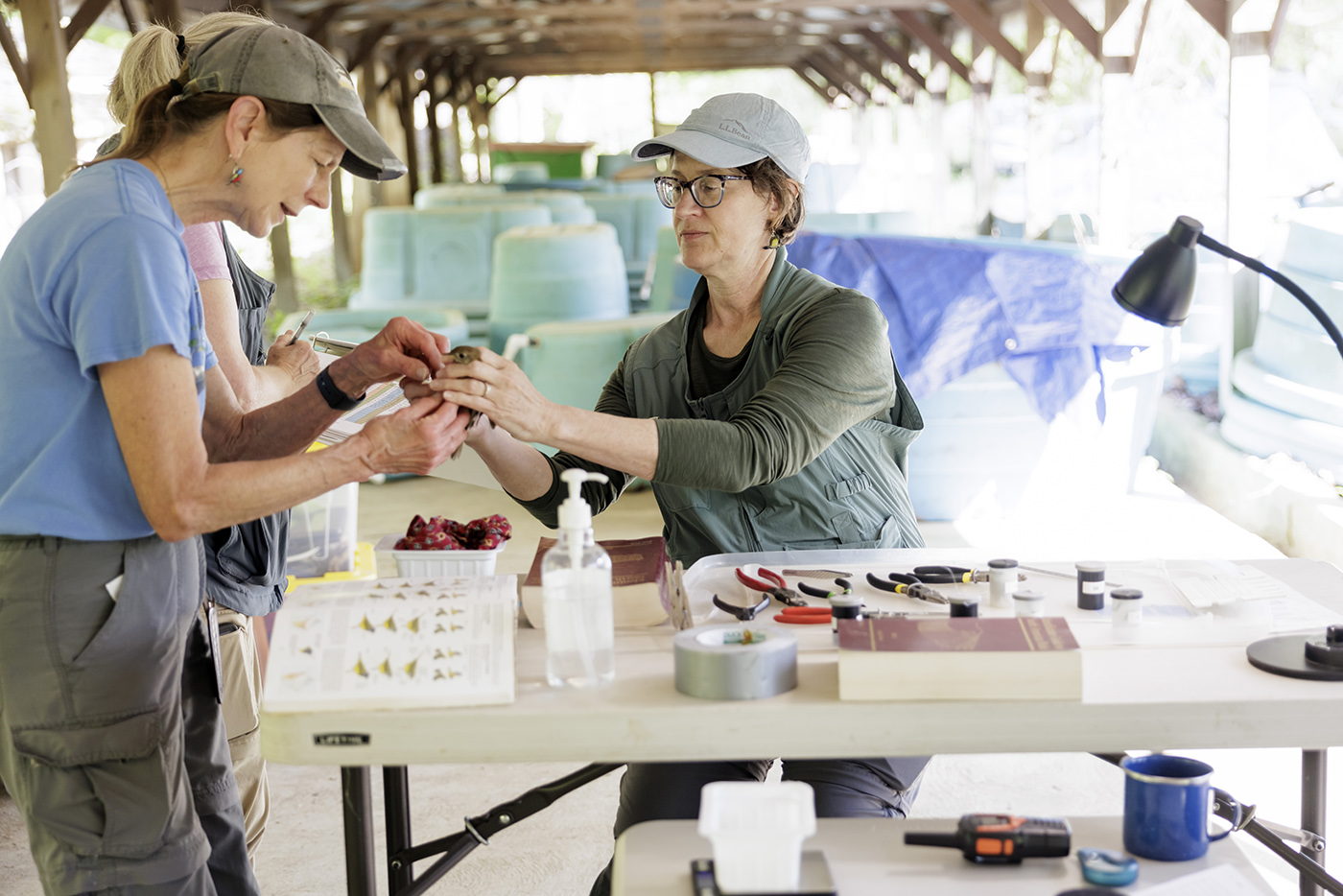
“I’ve always been interested in what kinds of birds are using this area as a stopover,” said Matchefts, who leads the World Bird Sanctuary (WBS) bird banding team. She and a group of volunteers record and post the migration-related data they collect to a public repository maintained by the USGS Bird Banding Laboratory, a federally funded bird tracking and scientific research effort.
Bird banding data like the kind they are collecting in St. Louis are useful in both scientific research and conservation projects.
By identifying individual birds and recording vital statistics about them, this work makes it possible for other scientists to study dispersal and migration, survival rate, reproductive success and population growth.
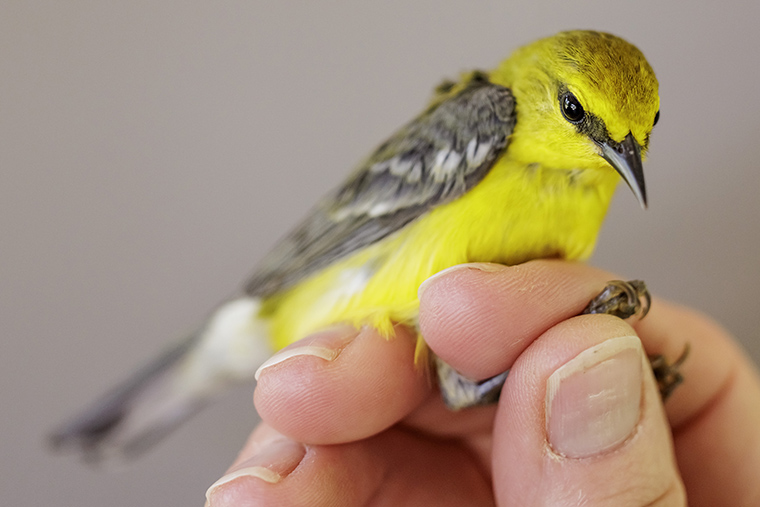
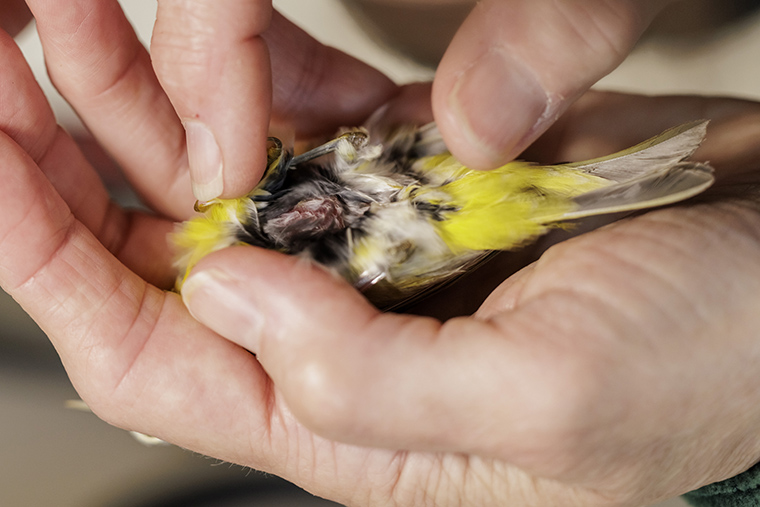
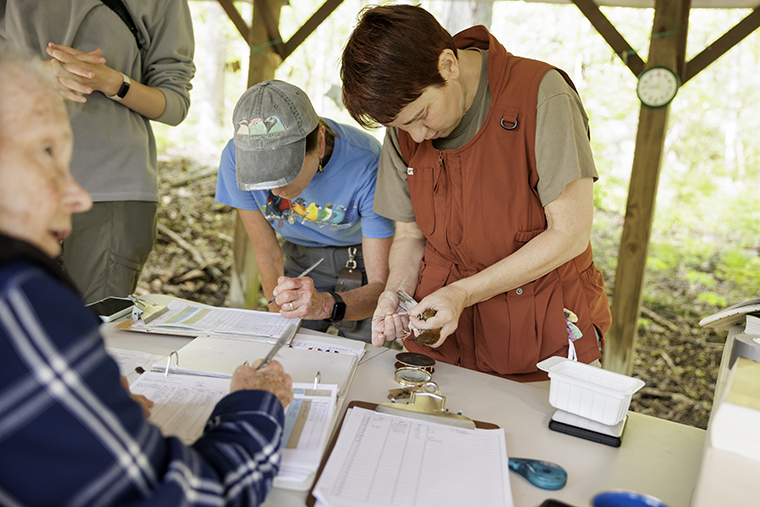
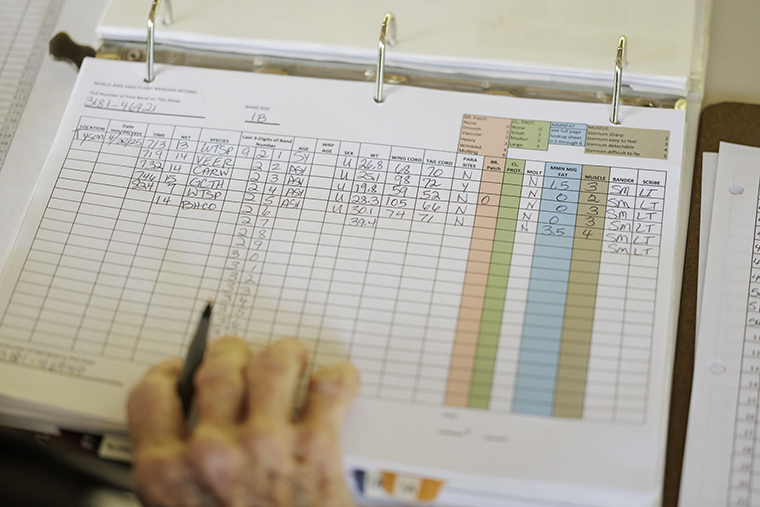
2025 was the third year that Tyson hosted a spring season migratory bird banding project. Prior to this time, volunteers had set up their mist nets at the nearby WBS rehabilitation facility in Valley Park for more than 10 years.
But when avian flu emerged as a local threat in 2022, WBS veterinarians became concerned that a migratory bird might expose the facility’s vulnerable raptors to disease. Faced with the prospect of losing the continuity of their long-term data collection effort, Matchefts approached Tyson about moving the banding project next door.
“Long-term datasets are critical to understand how species react to environmental change,” said Kim Medley, the director of Tyson Research Center. “Field stations are key to this effort, and Tyson is a great place to help our neighbors continue this important work.”
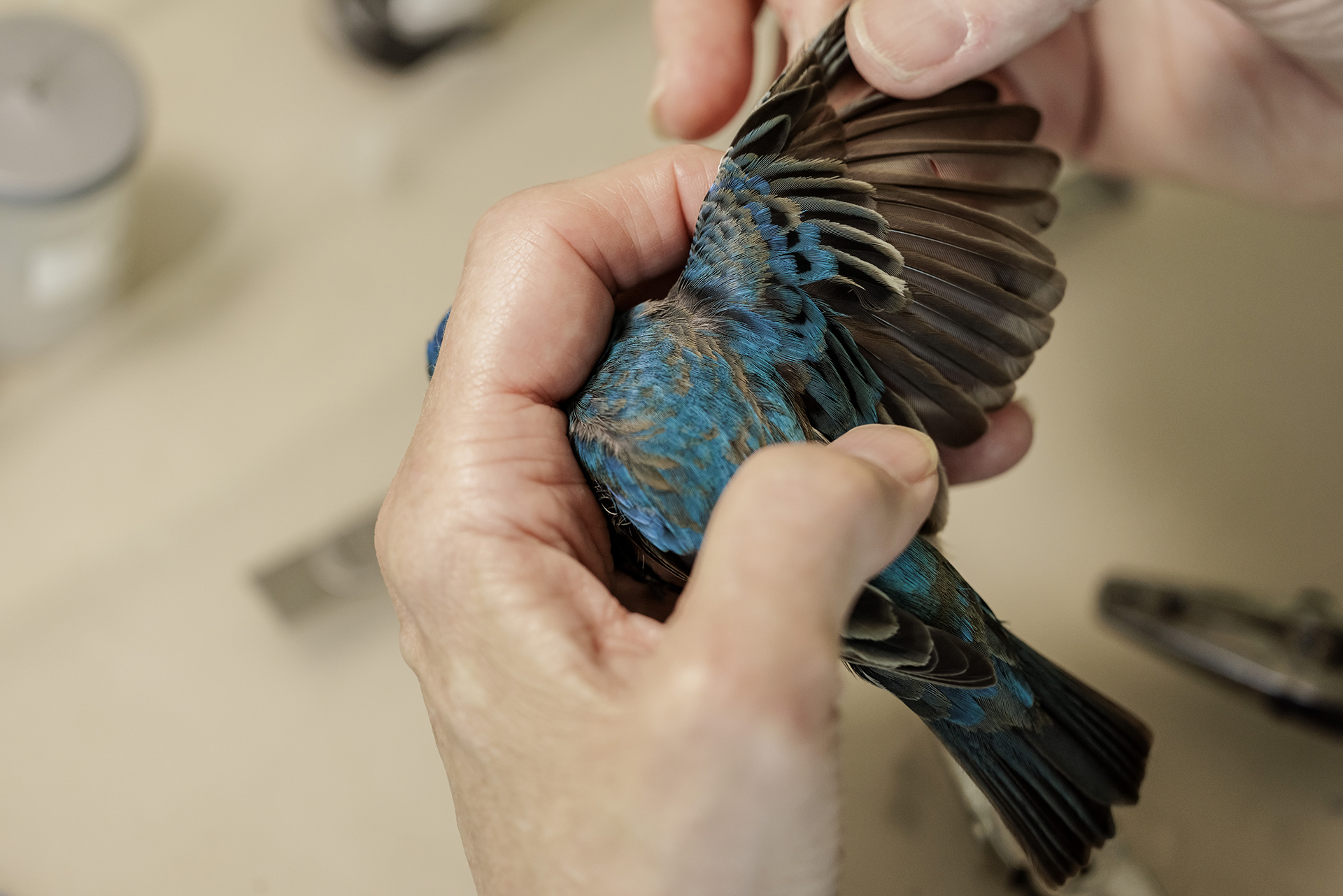
To capture birds, the bird banding team strings nets made of soft nylon mesh between metal poles. These mist nets are positioned in open spaces between trees in the forest where birds may swoop down to hunt for insects. Volunteers unfurl the nets at sunrise and close them again after four hours of vigilant monitoring. On one particular morning this season when a photographer visited, the bird banding team banded, processed and released more than 60 individual birds at Tyson.
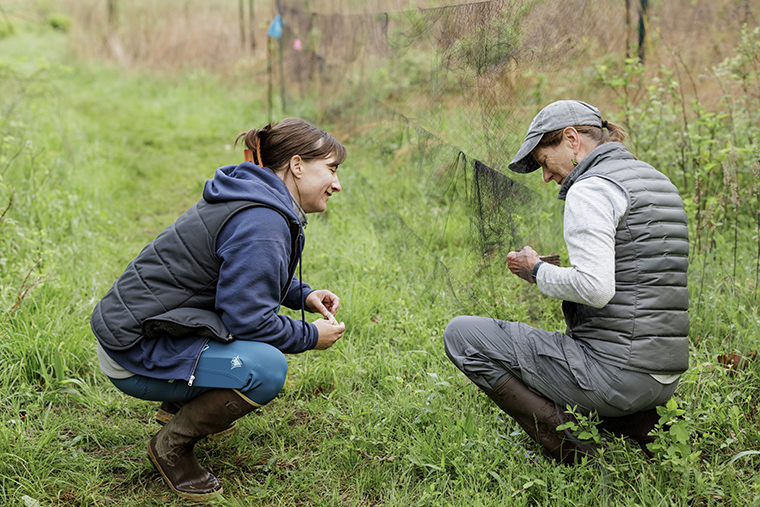
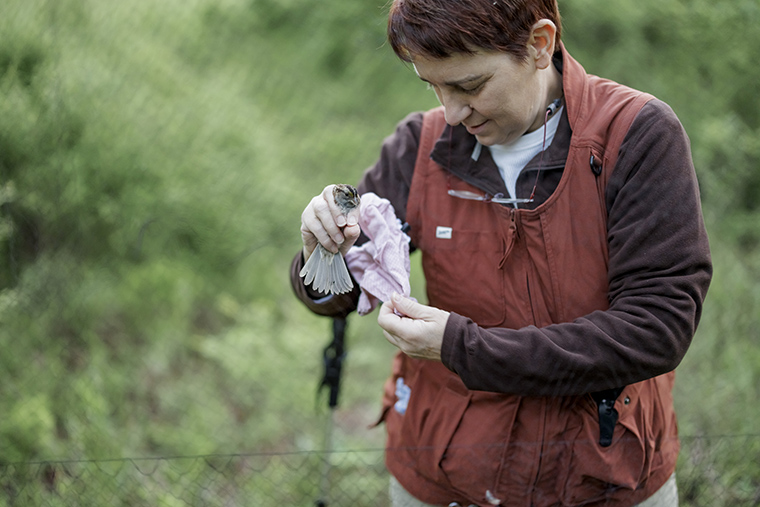
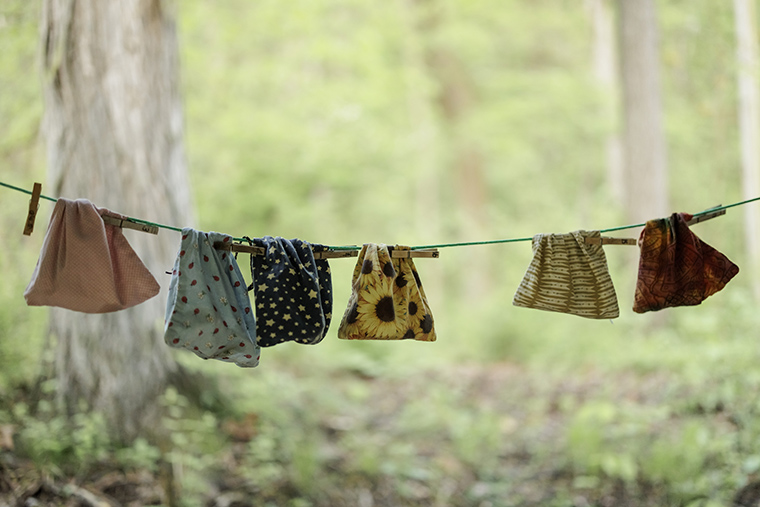
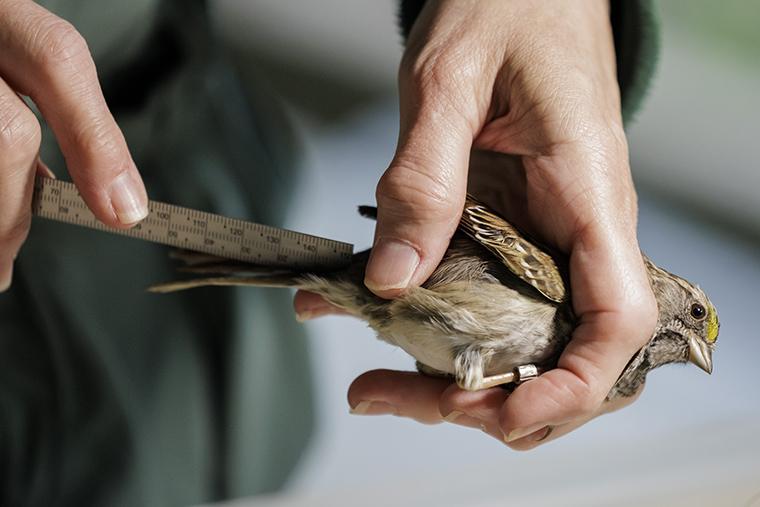
One notable bird that they caught that day was a female wood thrush (Hylocichla mustelina). This thrush is a medium-sized songbird with a white belly and prominent brown spots, known for its flute-like, ethereal song.
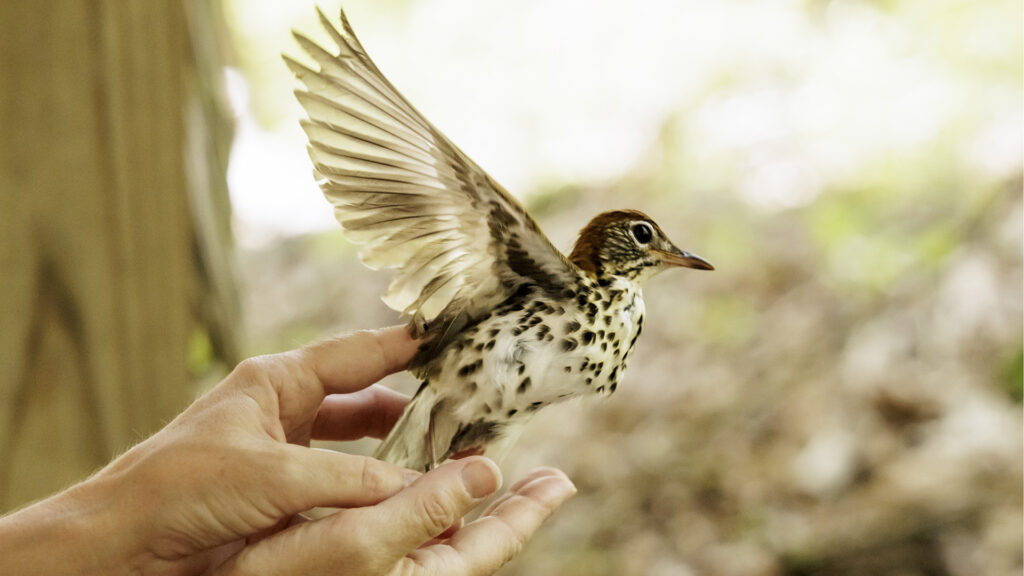
According to the Missouri Department of Conservation, the wood thrush is threatened by habitat loss occurring not only in the United States, but also in Central America, where the birds overwinter. Biologists use this species to indicate how the populations of many other woodland birds are faring. Matchefts and her team participate in the Midwest Migration Network, which has recently initiated its own wood thrush tagging project.
In 12 years of combined effort at Tyson and in Valley Park, the volunteers banded 6,538 birds representing 88 different species. This year’s numbers will be added to that tally.
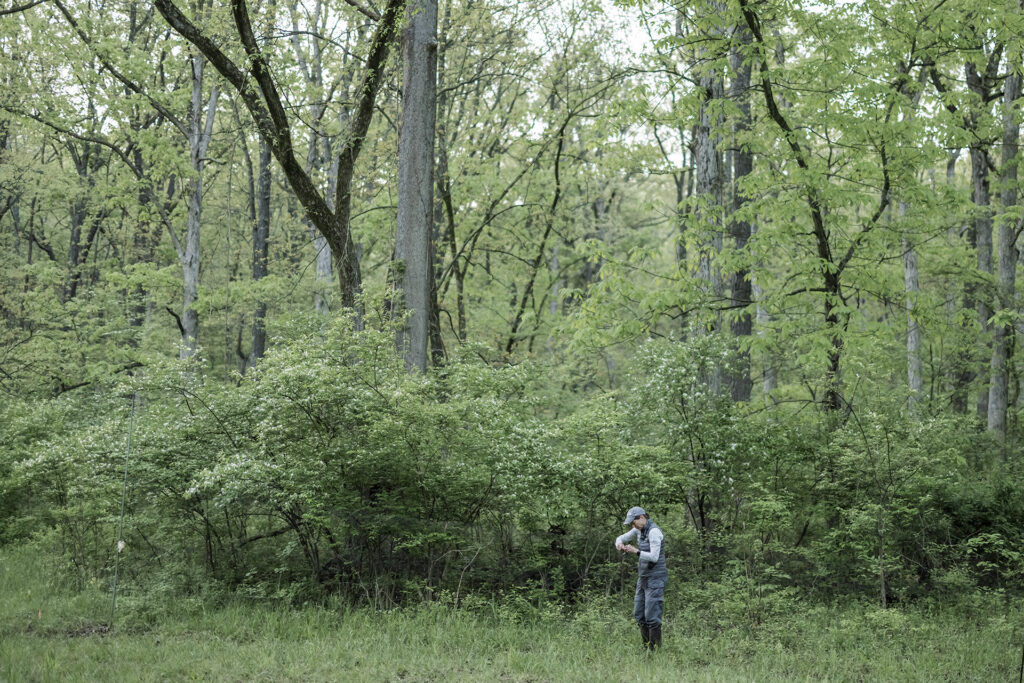
And 2025 was another good year. “We’re getting some warblers at Tyson that we did not get at the sanctuary site,” Matchefts said.
Other birds recorded at Tyson — some year-round residents, some migrants just passing through — include the Tennessee warbler, Swainson’s thrush, Nashville warbler, gray-cheeked thrush, ovenbird, red-eyed vireo, indigo bunting and the white-throated sparrow.
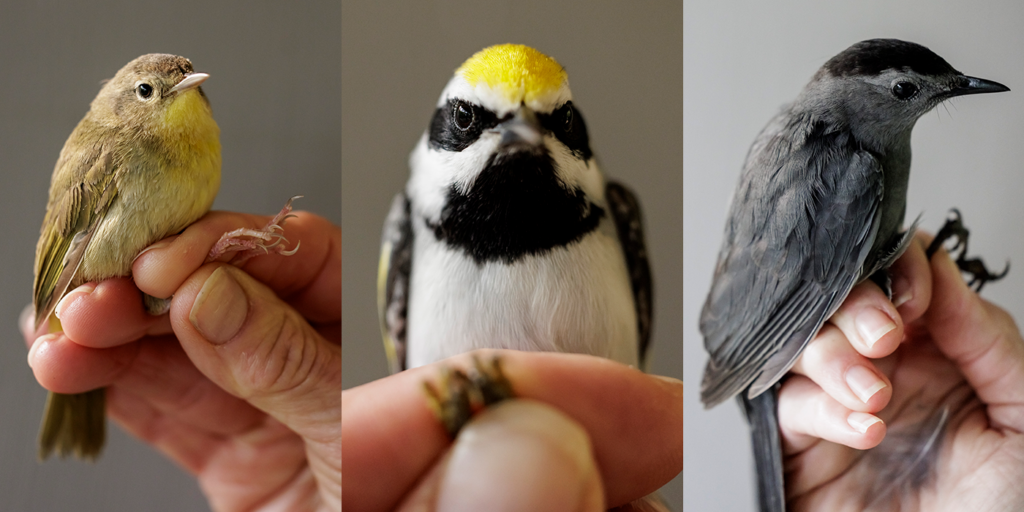
“Birds rely on local forest habitat for migration stopovers on their way to their breeding grounds,” Matchefts said. “With migratory bird populations declining worldwide, long-term studies like this one provide bird longevity and migration information that can help scientists and conservation planners.”
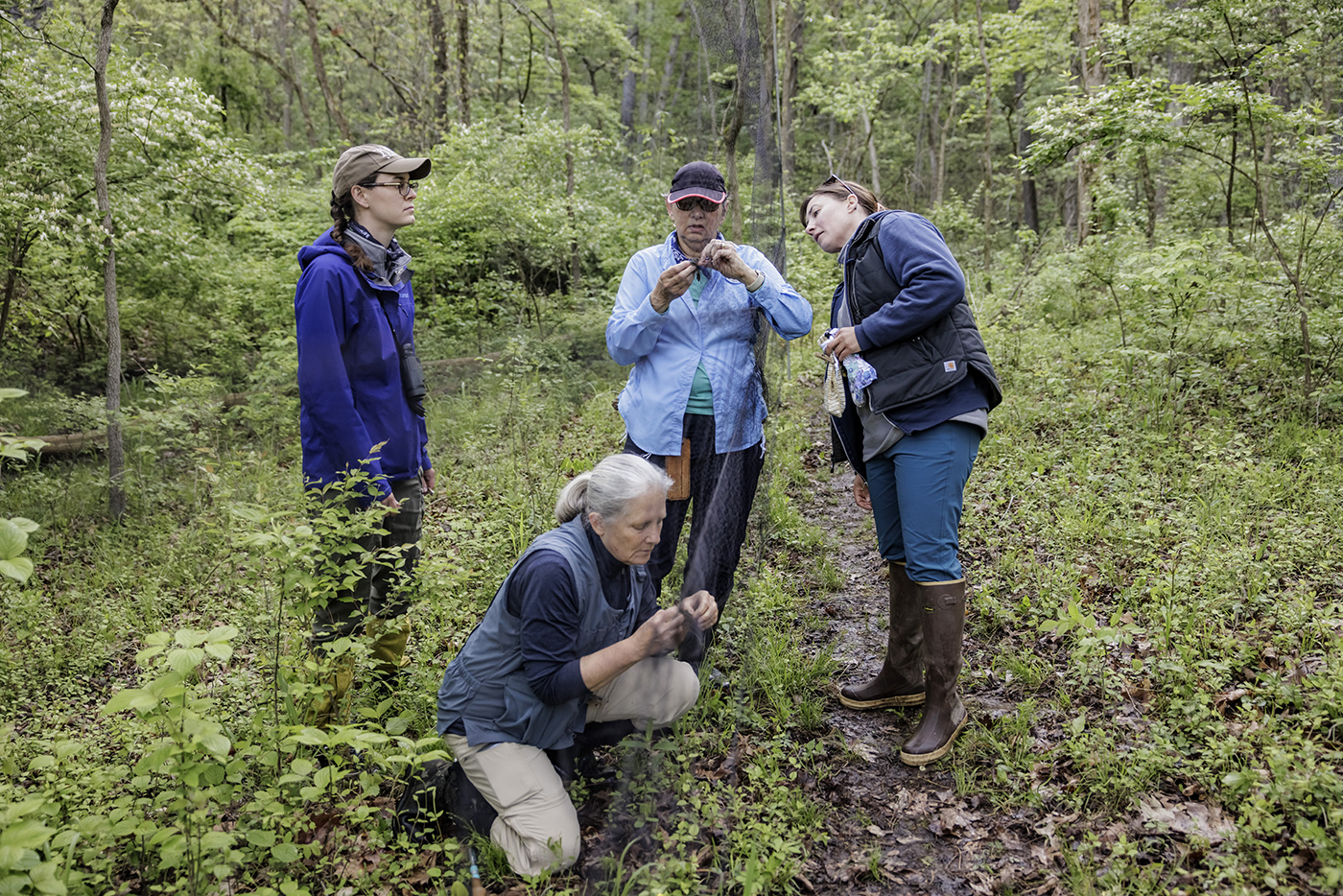
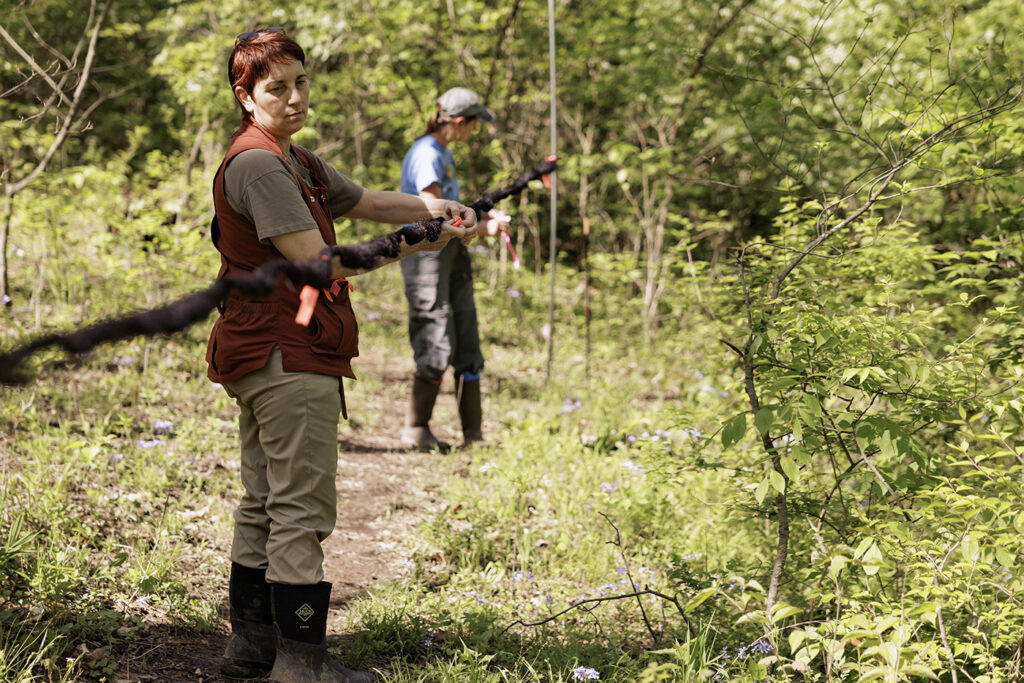
The World Bird Sanctuary bird banding team offers free public demonstrations of their bird banding activities on Fridays during July, from 8-10 a.m., weather permitting. Contact the center to confirm event details.
